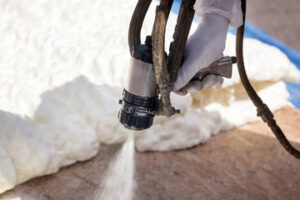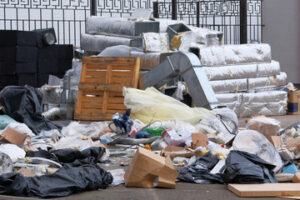Cleveland Plumbers install, repair, and maintain pipes and fixtures that carry water, gas, sewage, or waste to and from homes and businesses. Their job duties include reading blueprints and drawings, measuring, cutting, shaping, and assembling materials, using hand tools and power tools, and completing inspections.
Plumbers often work evenings and weekends and are on call for emergency situations. This can affect their personal lives.

Installation
Plumbers install plumbing systems in new homes and buildings, as well as repairing and maintaining existing ones. Their installation services include laying pipes, setting toilets, and installing faucets and other fixtures. They also hook up appliances like dishwashers and washing machines, and may inspect and test piping and fixtures to ensure they are working properly.
Plumbers use a variety of tools and materials to complete their work, including tubing, soldering equipment, wrenches, screwdrivers, pliers, and more. They also need to know how to read blueprints and understand building codes and regulations. Plumbers often collaborate with other professionals, such as architects and construction teams, to ensure that plumbing is integrated seamlessly into the design of a building or remodeling project.
Plumbing systems take away waste, provide clean water, and regulate indoor climate through a network of pipes, valves, and fixtures. These systems are essential for ensuring the comfort and safety of occupants. Consequently, they must be installed and maintained correctly.
Plumbers who specialize in specific areas of the field often continue their education by taking classes and seminars on new technology and advancements in the industry. This allows them to offer their clients the latest solutions for their home or business’s plumbing needs. In addition, those who are interested in becoming plumbers can receive the necessary training through a formal apprenticeship or a vocational school program. After completing the program, students must pass an exam to receive their license. The licensing requirements vary by jurisdiction, but most require applicants to have completed an apprenticeship and have a minimum number of years of experience. Additionally, some plumbers choose to obtain additional certifications to improve their career prospects and pay.
Repair
The pipework in a home is crucial to the functioning of water and heating systems. If these pipes develop a leak or burst, it can cause major problems that need to be fixed right away. This is where the plumber comes in. They have the tools and skills to repair a wide range of plumbing issues.
A residential plumber will be able to inspect the entire system and make recommendations on what needs to be done to ensure it is working properly. This could include repairing or replacing parts, installing new fixtures and appliances, or rerouting the whole system. They can also assist with septic tank maintenance and install garbage disposal units.
Leaking faucets, toilets that don’t flush, and clogged drains are all common repairs that plumbers will need to address. They can use a variety of tools to remove blockages, including snakes and augers. For more severe clogs, they might need to dig up the pipe and replace it. Plumbers will also need to repair or replace damaged valves, washers, and gaskets.
Commercial plumbers specialize in maintaining larger plumbing systems found in office buildings, restaurants, and other large structures. Their work can involve more complex tasks, such as installing and repairing specialized water heaters. These plumbers will need to have a higher level of customer service, as they often work with management and other supervisory staff to ensure the plumbing systems are up and running correctly.
One of the most important jobs of a plumber is to ensure that there is always a steady supply of clean, fresh water. If the plumbing system isn’t working properly, it can lead to a variety of health and safety issues, from poor water quality to flooding and fires. Fortunately, plumbers are on hand to fix these issues quickly and efficiently.
Maintenance
One of the most important roles of plumbers is ensuring that the water supply and drainage systems in homes and commercial spaces are working properly. This ensures that occupants have access to clean, safe water and that waste is removed from the building regularly. In order to do this, plumbers may need to inspect, repair, or replace various parts of the plumbing system.
Depending on the type of plumbing system, this can include pipes, fixtures, appliances, and vents. Plumbers often use specialized tools to inspect and repair systems, and they can also install new components like toilets, faucets, sinks, and bathtubs. They may also be responsible for laying out plumbing plans for new constructions and renovations.
Maintenance services offered by plumbers may also include unclogging drains, repairing and replacing damaged pipes, ensuring hot water systems are functioning properly, and performing annual inspections. These professionals can help occupants avoid costly repairs by identifying and fixing issues before they become major problems.
There are several types of plumbers, each with a slightly different workplace environment and set of responsibilities. Residential plumbers work primarily in homes, completing installation and repair services for plumbing systems and fixtures. They may also provide customer service and give advice on how to maintain plumbing systems. Commercial plumbers work in a variety of environments, including offices, retail stores, restaurants, and hospitals. They install and repair large plumbing systems that serve multiple occupants, and they may also be responsible for installing heating, ventilation, and air conditioning systems.
While many people consider plumbing to be a skilled and rewarding profession, it is not without its risks. Plumbers are often exposed to biohazard materials like sewage when working on septic systems and drains, and they can also face injuries from working with power tools or in tight spaces. For these reasons, it is important for plumbers to take precautionary measures and wear protective gear when on the job.
Inspection
Plumbers often inspect pipes, fixtures and appliances to ensure they work properly. They may check water pressure, test for leaks and clogs, install or repair drain lines and sewer lines, and recommend and install energy-efficient devices. They also must be familiar with a variety of tools and building codes to complete their jobs. In some cases, plumbers must be able to climb ladders and enter crawl spaces to access hard-to-reach areas.
While some plumbing jobs are done in residential settings, others take place in commercial or industrial environments. For instance, some plumbers specialize in water systems for manufacturing plants, power stations and other large-scale facilities. In these settings, plumbers must be able to work with complicated plumbing equipment and a wider range of pipe sizes and materials.
For homeowners, a plumbing inspection can help identify potential problems before they turn into major disasters. For example, a leaking water heater or clogged sewer line can lead to extensive and expensive home restoration. Having these issues identified and repaired early on can save homeowners a lot of money and hassle.
In addition to visual examinations of pipes and fixtures, plumbers can use a camera inspection to get a closer look at clogs or other problems. These cameras can be inserted into drains and other small openings to help locate blockages or determine the cause of an issue.
Plumbers can also perform a detailed inspection of gas pipes before selling a house. This can give buyers peace of mind that the home’s gas system is in good working condition and help the seller entice buyers. In addition, it can catch any lingering issues that might require attention before the sale is finalized.
Customer Service
Plumbers must be able to communicate well with customers to understand their plumbing needs and concerns. They may also need to explain the pricing and options for their services. Plumbers who are friendly and personable can often build trust with their customers and may even receive referrals from them in the future.
Customer service skills are especially important for plumbers who provide emergency services. These plumbers will need to be available on call at all hours of the day and night to respond to customer calls and address their plumbing issues promptly and efficiently. This can include resolving leaky faucets, clogged drains, and water heater repairs. Plumbers who provide customer service can help increase business and improve the reputation of their companies by showing customers that they value their satisfaction.
Some plumbers work directly with customers in residential settings, while others work with construction teams and architects to ensure that plumbing systems are integrated seamlessly into building projects. In addition, these professionals must be able to read and interpret blueprints and building codes.
Plumbers who work with gas lines must be licensed by their state’s regulatory body. These plumbers are responsible for ensuring that gas lines are properly installed and connected to appliances like stoves and water heaters. They may also need to test for leaks and other problems with the gas line system.
Many plumbers choose to work as independent contractors, which can offer greater flexibility and control over their schedules. However, this can also increase their risk of exposure to dangerous chemicals and sewage. Additionally, plumbing can be a physically demanding job that requires lifting heavy objects and working in tight spaces.







